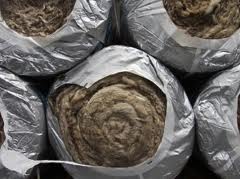 There is currently an offer of grants to homeowners in the area to get their homes better insulated. The grants cover loft insulation and draught proofing of windows and close doors, cavity wall insulation and insulation for water storage tanks and pipe work and apply to tenements and homes. It really is something for nothing but hurry, the grants run out in March.
There is currently an offer of grants to homeowners in the area to get their homes better insulated. The grants cover loft insulation and draught proofing of windows and close doors, cavity wall insulation and insulation for water storage tanks and pipe work and apply to tenements and homes. It really is something for nothing but hurry, the grants run out in March.
The Universal homes Insulation Scheme is part of the Scottish Government’s Energy Assistance Package and is run by the Wise Group and Ever Warm. By properly insulating your home you can reduce energy bills and make your home warmer.
Simply call to register your interest and arrange a visit. The Wise Group number is: 0800 092 9002. Ever Warm can be contacted on 01506 638600
All homeowners should have received a letter (around Christmas) regarding this but if you missed yours, please see this copy:Loft Insulation_0001



I’d urge caution.
I live in the neighbourhood, but people are probably not aware of my professional background. I’ve got a degree in architecture and two in civil engineering, the master’s concentrating partly on building science. Building science is the study of the passage of moisture and heat through building envelopes (the roof, walls and foundation). I’ve worked as a structural engineer and in building evaluation, as well as in building sector public policy. So, I’m well qualified to comment on this.
I’m from the Great Lakes region, which is a cold climate, much colder than Scotland in the winter and hot/humid in the summer. We had government programs in the 1970s that subsidised the addition of loft insulation to existing houses, both in the northern US and in Canada. In the 1980s, home inspectors started to notice rotting roof rafters. It wasn’t uncommon for the damage to be so bad that the roof structure needed to be reinforced or replaced.
The problem was that when the loft insulation had been added, inadequate ventilation was provided. When a loft is insulated, the space above it, included the underside of the roof, are much colder than the building below. However, unless a tight air barrier is added (difficult to do in an existing building, especially if loft access is to be maintained), moist air passes from the living areas into the loft. When this warm, moist air hits the cold rafters and boards, it condenses. The underside of the roof structure becomes damp, and mould and rot grow. After 10-20 years of this, the roof structure can be ruined. I’ve seen this myself in building inspections.
The amount of ventilation needed to prevent this is considerable: new houses with highly insulated lofts in the Great Lakes region are now built with continuous ridge and eave vents. This also prevents the snow that collects on the roof from melting and forming ice dams.
Although the winters here aren’t as cold as they are at home, I think that condensation might be a issue here as well, especially with the roofs of older buildings. It’s also worth noting that many of these buildings have cisterns in the lofts that are open to the air and still in use. The growth of rot and mould could affect the quality of the water in the cisterns, as could fiberglass dust (from the insulation) in the air. Roof and cistern access are issues as well; if the insulation is ticker than the attic joists (and I’m pretty sure it will be), then it may become difficult to reach to roof access and the cisterns.
I’m a greenie, but I’m also a preservationist. Adding insulation to old buildings can be problematic and shouldn’t be done without due consideration. According to Scottish Power, tenements and terraced houses are already more energy efficient than newer buildings. In my opinion, good ways to improve their efficiency would include adding a sealed layer of insulation to wall nooks and under window openings, making windows and exterior doors more airtight, and switching to compact florescent lights. I wouldn’t super-insulate the lofts without first addressing ventilation, access, and (if applicable) cistern access and water quality – and once that’s done, there goes the “free” insulation.
Hi Dee. I’ll take your advice and query access and condensation. I suspect this isn’t a big known issue in the UK as the temperature variables aren’t as extreme so condensation may not be such a big problem. I know my parents have been installing loft insulation since the ’70s and never had problems as described above (but then we never stayed in any house for more than a decade either!). As I mentioned in the post the scheme also covers air-based leakage issues and my main reason for contacting them is to get the exterior doors in our tenement better draught-proofed.